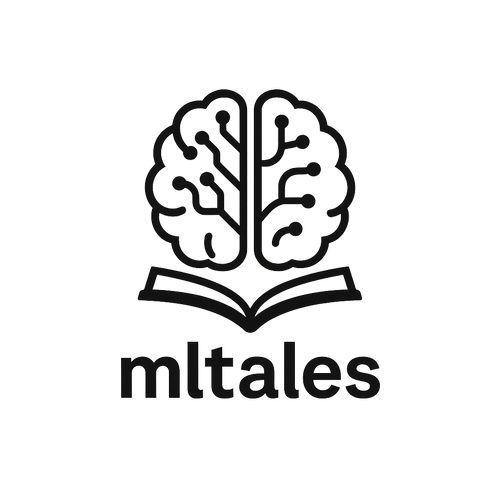The Ultimate Roadmap to Becoming an AI Engineer (Free Resources Included)
AI engineering isn’t magic—it’s a system built on math, code, and scalable systems. While you don’t need a PhD, a solid grip on key concepts like linear algebra, probability, and statistics is essential. This guide gives you everything you need—free and in order—to grow into a professional AI engineer.
1. Mathematical Foundations
Mathematics is the language of machine learning. Concepts like linear algebra help describe how data moves through a neural network, while probability and statistics are key to making sense of data, evaluating predictions, and understanding uncertainty. Without this foundation, deeper topics in AI—like optimization, model evaluation, or generative models—can become black boxes. Investing time in math early pays off massively later.
- Essence of Linear Algebra (3Blue1Brown)
- Probability & Statistics (Khan Academy)
- Statistics Fundamentals (StatQuest)
- Mathematics for Machine Learning (Coursera)
2. Python Programming for AI
Python is the go-to language for AI development. It’s simple, readable, and has powerful libraries for everything from data manipulation to deep learning. Mastering Python equips you to work with tools like NumPy, Pandas, TensorFlow, and PyTorch—essentials for building and deploying real-world AI solutions.
3. AI & ML Fundamentals
Before diving into advanced AI, it’s important to grasp the fundamentals: supervised and unsupervised learning, key algorithms, model evaluation, and the ML workflow. These concepts form the backbone of nearly all AI systems and prepare you for more complex architectures.
- Machine Learning Crash Course (Google)
- AI for Beginners (Microsoft)
- Elements of AI (University of Helsinki)
- Machine Learning Specialization (Coursera)
4. Deep Learning
Deep learning powers modern AI applications, from computer vision to chatbots. Here, you’ll learn about neural networks, activation functions, backpropagation, and model training. This is where AI starts to feel like magic—but it’s built on clear math and engineering principles.
- Deep Learning Specialization (Coursera)
- Practical Deep Learning for Coders (Fast.ai)
- Deep Learning Explained (StatQuest)
5. Deep Learning Frameworks
Frameworks like TensorFlow and PyTorch make it possible to build and train neural networks at scale. Learn their APIs and workflows to experiment with real datasets and deploy performant models.
6. Specialized Domains in AI
AI spans diverse fields. Focusing on specific domains like vision, language, or reinforcement learning lets you apply core knowledge to real-world use cases.
Computer Vision
Natural Language Processing (NLP)
Reinforcement Learning
7. Generative AI
Generative AI involves creating new content—text, images, even music. Learn the theory behind models like GPT and GANs, and how to apply them to creative and automation tasks.
- Building Blocks of Generative AI
- Generative AI for Beginners (Microsoft)
- Generative AI for Everyone (Coursera)
8. Large Language Models (LLMs)
LLMs like GPT, BERT, and LLaMA revolutionized how machines understand and generate language. Learn how they work, how to use them via APIs, or even build your own from scratch.
- The Illustrated Transformer
- Understanding Large Language Models
- Building GPT from Scratch (Andrej Karpathy)
- LLM Courses (Hugging Face)
9. Prompt Engineering
Mastering prompt engineering helps you get more accurate and reliable outputs from LLMs. It’s essential for building smart assistants, search systems, and interactive agents.
- Prompting Essentials (Google)
- ChatGPT Prompt Engineering for Developers (Deeplearning.ai)
- Advanced Prompting Techniques
10. Retrieval-Augmented Generation (RAG)
RAG combines the power of search with generation. It enables chatbots and QA systems to pull real-time data and generate contextual answers.
11. AI Agents
AI agents go beyond Q&A—they can browse, execute tasks, and make decisions. Learn how to build multi-step agents using LLMs and APIs.
- Visual Guide to LLM Agents
- AI Agents Course (Hugging Face)
- Building AI Browser Agents (Deeplearning.ai)
12. Model Context Protocol (MCP)
MCP introduces a structure for building long-running, context-aware applications using LLMs. It helps maintain state and logic across multi-turn interactions.
13. MLOps & Model Deployment
Deploying and managing ML models is as important as training them. MLOps combines software engineering with ML to ensure scalability, reliability, and automation.
14. Tools for AI Engineers
Learn to use powerful tools that streamline development and experimentation.
15. Recommended Books
Books can deepen your understanding and give you long-term reference material.
- Hands-On Machine Learning with Scikit-Learn, Keras, and TensorFlow
- Deep Learning by Ian Goodfellow
- Deep Learning with Python
- Designing Machine Learning Systems
- Prompt Engineering for LLMs
16. YouTube Channels to Follow
These creators make AI topics visual, practical, and fun.
- Andrej Karpathy — coding deep learning from scratch
- 3Blue1Brown — math made beautifully intuitive
17. Additional Resources
These platforms help you practice and stay updated with the latest in AI.
- Papers with Code — find SOTA models with code
- Kaggle Competitions — hands-on ML problem solving
18. Must-Read Research Papers
Foundational research that shaped modern AI:
- Attention is All You Need
- Generative Adversarial Networks (GANs)
- GPT: Improving Language Understanding by Generative Pre-Training
- GPT-3: Language Models Are Few-Shot Learners
- BERT: Pre-training of Deep Bidirectional Transformers
- Chain-of-Thought Prompting Elicits Reasoning in LLMs
Whether you’re just starting or looking to level up, this roadmap provides a practical, curated, and high-impact path to becoming an AI engineer using only free, accessible resources. Bookmark it, share it, and start learning today!
